In the world of miniature collecting, few categories inspire more devotion than vintage dollhouse furniture. These tiny heirlooms are more than whimsical décor: they are artifacts of domestic life, miniature reflections of social history, craftsmanship, and style trends across centuries. For collectors passionate about historical and rare pieces, understanding the provenance, styles, and preservation of antique dollhouse furniture is vital—not only to guide acquisitions, but to deepen one’s appreciation of this specialized art form.
This article serves as a history / backgrounder on vintage dollhouse furniture: tracing its development, surveying major styles, identifying key makers and rarities, and offering practical guidance to serious collectors in the the realm of miniatures & models under the Hobbies & Crafts umbrella—specifically in Dollhouse → Dollhouse Furniture.
Origins and Historical Evolution
Early Miniatures and “Cabinet Houses”
The fascination with miniatures is longstanding: miniature furnishings have been found in archaeological contexts (for ritual or offering use) long before the notion of play or display became central. But the line from those predecessors to the collector’s miniature is indirect.
In Europe, the so-called “cabinet house” tradition emerged in the 16th–17th centuries. Wealthy patrons would commission “houses of art” — essentially cabinet-sized display cases containing scaled-down rooms, complete with furniture, tapestries, and decorative objects. These models were not meant for children, but for adult display and connoisseurship. Over time, the boundary between cabinet miniatures and play miniatures blurred.
By the late 17th and early 18th centuries, the Dutch and German tradition of Nuremberg kitchens and miniature “cabinets of curiosities” introduced domestic miniatures in a somewhat playful or representational role. The famed Petronella Oortman dollhouse (circa 1686–1710), now housed in the Rijksmuseum, is a high bar for the intersection of art, domesticity, and miniatures, containing exquisitely made furniture and fixtures crafted by skilled artisans.
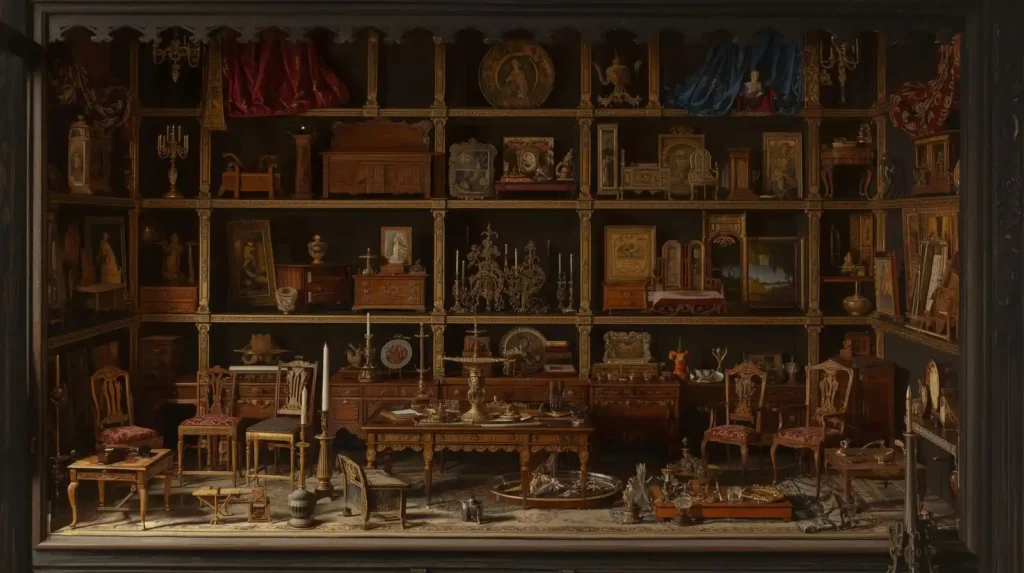
The 19th Century: Victorian Domestic Miniatures
In the Victorian era, dollhouses and miniature rooms became more common as both children’s playthings and collectors’ objects. This is when Victorian dollhouse furniture assumes historical prominence. Miniature parlors, bedrooms, and kitchens were furnished to echo the design trends of full-size Victorian homes—mahogany sets, spindle-back chairs, upholstery, carved ornament, and turned legs.
Some Victorian miniature sets were produced in scale 1:12 (one inch to one foot), a scale that remains standard today. Because of their age and fragility, surviving Victorian dollhouse furniture is rare—and highly prized by collectors.
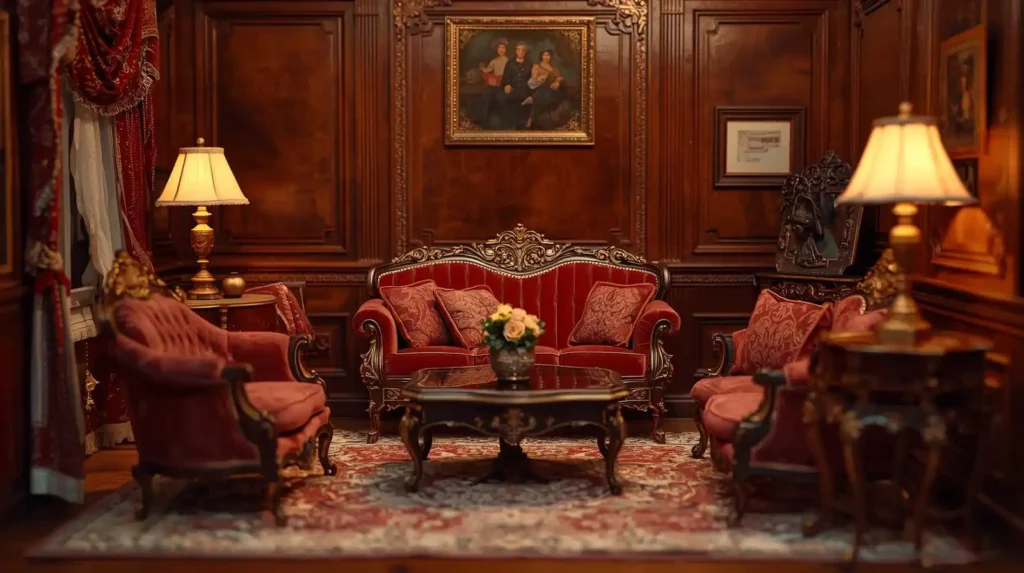
20th Century: Mass Production and the Rise of Collectibility
With the advent of industrial mass production in the early 20th century, collectible miniatures entered a new phase. Companies such as TynieToy began scaling down full-size furniture models into uniform miniature lines. For example, TynieToy furniture produced between 1925 and 1935 is today a sought-after category: pieces from that period can sometimes be dated by maker marks (rubber stamps or impressed marks introduced in later years). (PBS)
Between the 1920s and 1950s, many toy manufacturers—such as Schoenhut, Tootsietoy, Marx, and Renwa—issued dollhouse sets with accompanying miniature furniture, often molded in wood, metal, or early plastics. These strove to combine affordability with visual realism. Yet many collectors today prioritize original factory sets and rare lines over later reproductions.
In the later 20th century, high-end artisan miniaturists and hobbyists began producing bespoke and reproduction furniture—some in homage to antique styles, others pioneering new miniature aesthetics. Still, vintage and rare dollhouse furniture from the first half of the century or earlier continues to anchor the most prestigious collections.
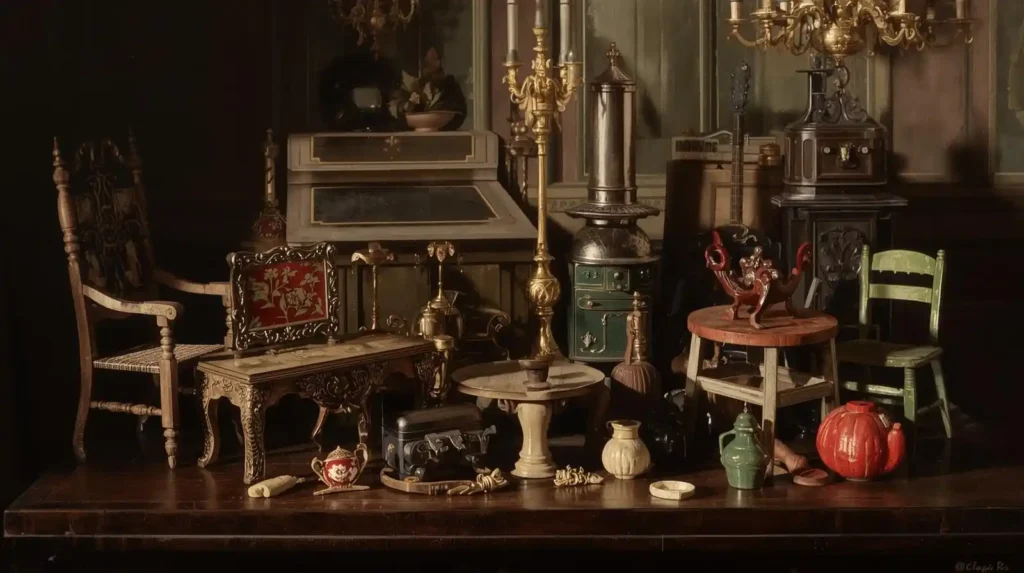
Styles, Materials & Makers of Vintage Dollhouse Furniture
Collectors often distinguish vintage dollhouse furniture by style, material, maker, and rarity. Below are key classifications and hallmarks to watch for.
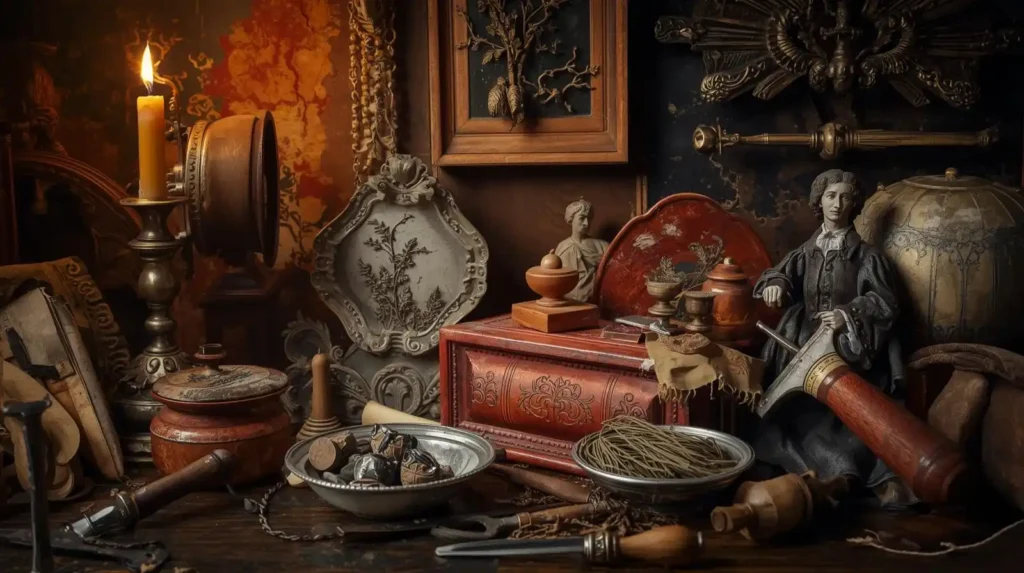
Stylistic Periods
- Victorian / Edwardian: Carved ornament, turned legs, rich stains, tiny upholstery. This is perhaps the most classically recognizable miniature furniture style.
- Arts & Crafts / Mission (early 20th century): Simpler lines, emphasis on verticals, oak finishes.
- Art Deco / Moderne: Sleek geometric forms, chromed metal, occasionally mirrored surfaces.
- Mid-Century Modern (post-1940s): Slender profile, minimalism, molded plastics.
- Eclectic & Revival: Later vintage pieces that echo Gothic, Rococo, Georgian, or other revival motifs.
Understanding these stylistic families helps a collector assess whether a piece plausibly dates from the era claimed, or is a later homage or reproduction.
Materials & Construction
- Wood: Many early antique and Victorian miniature pieces were carved or turned from hardwoods (walnut, mahogany, rosewood), with miniature joinery (dovetailing, tongue & groove). These are among the most collectible.
- Metal / Tin: Some 1920s–1930s sets used tin or pressed-metal components—particularly in children’s toy sets.
- Celluloid / Early Plastics: Post-1920s, usage of early plastics introduced new forms and cost efficiencies.
- Composite & Papier-Mâché: Occasionally used, often in ornament or as composite forms in crests or moldings.
Look for tool marks, wear on edges, patina, and material degradation that match the claimed vintage.
Notable Makers & Lines
Some names carry particular prestige:
- TynieToy (Providence, Rhode Island): Known for high-quality colonial revival miniatures; earlier pieces use paper labels or rubber stamps, later pieces carry impressed marks.
- Schoenhut, Tootsietoy, Marx: Big players in mid-20th-century toy dollhouses and furniture lines.
- Dorothy Rogers: A legendary miniaturist whose needlework carpets and upholstery pieces appear in iconic collections like Queen Mary’s Dolls’ House. (Wikipedia)
- Artisan miniaturists from the late 20th century: Their bespoke tiny pieces, especially in solid hardwoods and fine marquetry, sometimes rival vintage furniture in value.
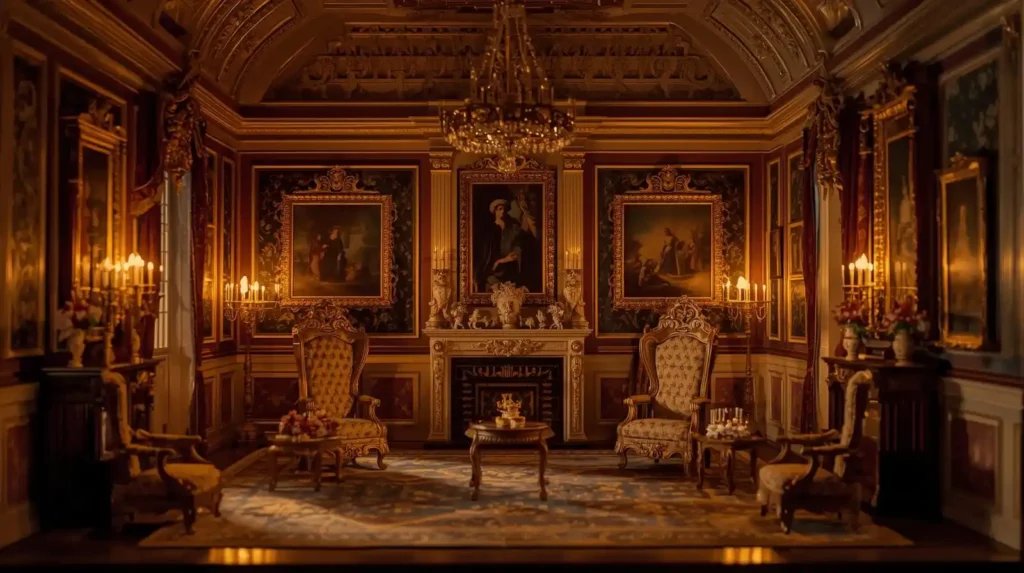
Rarity and Condition Factors
- Signed / Marked Pieces: Maker’s marks, stamps, labels (or catalog references) add provenance and value.
- Completeness: Sets (e.g. parlors with matching sofa, chairs, tables) are worth more than lone chairs.
- Wear Patterns: Natural, consistent wear is more credible than damage-free pieces in century-old wood—which may be suspicious.
- Restoration & Overpainting: Many vintage pieces were refinished over time; evidence of later paint or glue should be disclosed.
- Scale Accuracy: 1:12 is standard, but some vintage lines used alternate scales. A mismatch can affect display compatibility.
Collecting Vintage Dollhouse Furniture: Best Practices
Defining Collecting Goals
A prudent first step is for a collector to define their niche: Is their focus on antique dollhouse furniture (pre-1930), or do they also entertain high-end midcentury and artisan miniatures? Will they collect by style (Victorian, Deco), by maker (TynieToy, Dorothy Rogers), or by function (bedroom sets, kitchen suites)? A focused scope makes collecting sustainable.
Research & Reference Works
To navigate the market, authoritative reference books and catalogs are critical. For example, the book American Dollhouses and Furniture From the 20th Century includes over 650 color photographs and a comprehensive price guide across manufacturers. Meanwhile, resources like The Complete Guide to Strombecker Dollhouses and Furniture 1931–1961 document detailed catalogs and style progressions.
Online collector forums, miniatures auction results, and digitized vintage catalogs (e.g. via miniatures archives) can fill gaps and reveal market trends—especially for rare dollhouse furniture.
Authentication & Condition Assessment
When evaluating a prospective acquisition:
- Provenance Documentation: Ask for original catalogs, invoices, or collector pedigrees.
- Material & Toolmarks: Under magnification, check for machine vs. hand tooling, evidence of aging, patina, and consistent surface wear.
- Scale & Proportion: Full-size design logic (e.g. chair seat height proportion) should scale down coherently.
- Restoration Disclosures: Good dealers will report glues, repairs, or repainting.
- Comparative Sales: Compare with known auction records and dealer listings (e.g. from miniantiques.com).
For fragile or extremely rare pieces, consult a specialist appraiser or conservator before committing.
Display, Storage & Conservation
Given their fragility, vintage dollhouse furniture must be handled and stored with care:
- Controlled environment: Stable temperature, moderate humidity (around 45–55 %), and minimal UV exposure help prevent warping, cracking, or fading.
- Support & mounting: Use foam-lined trays or archival boxes to prevent movement. Avoid forced stacking.
- Dust & pest protection: Enclosed display vitrines or glass-fronted cabinets reduce dust accumulation and pest access.
- Handling: Use clean cotton gloves to avoid skin oils damaging finishes.
Collectors often build display dioramas—perhaps historical rooms—where the vintage pieces can be contextually appreciated. For deeper research, you might cross-reference pieces to a dollhouse furniture guide to learn more about scale, materials, and matching sets.
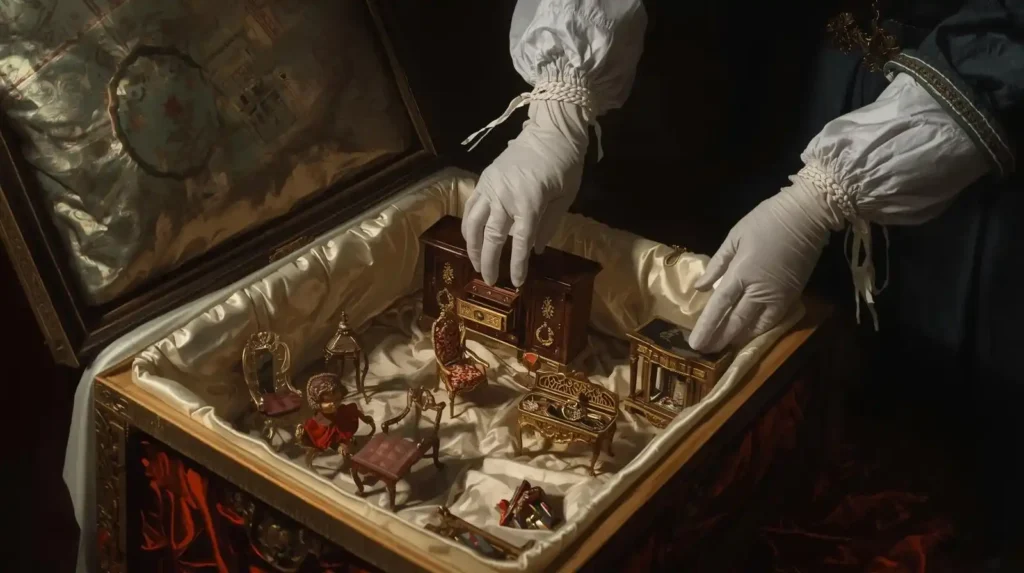
Acquisition Channels & Valuation
Primary acquisition routes include:
- Auctions and estate sales: High-end miniature and antique auctions sometimes carry prized sets.
- Specialist dealers: Dealers of dollhouses and miniatures often vet pieces and authenticate them.
- Collector exchanges and forums: Trusted networks sometimes lead to trades or private sales.
- Catalog reprints / vintage catalogs: Useful for identifying models and establishing reference pricing.
Valuation depends on maker, rarity, condition, completeness, and demand. Prices can range from modest for chipped chairs to thousands for complete, authenticated Victorian sets.
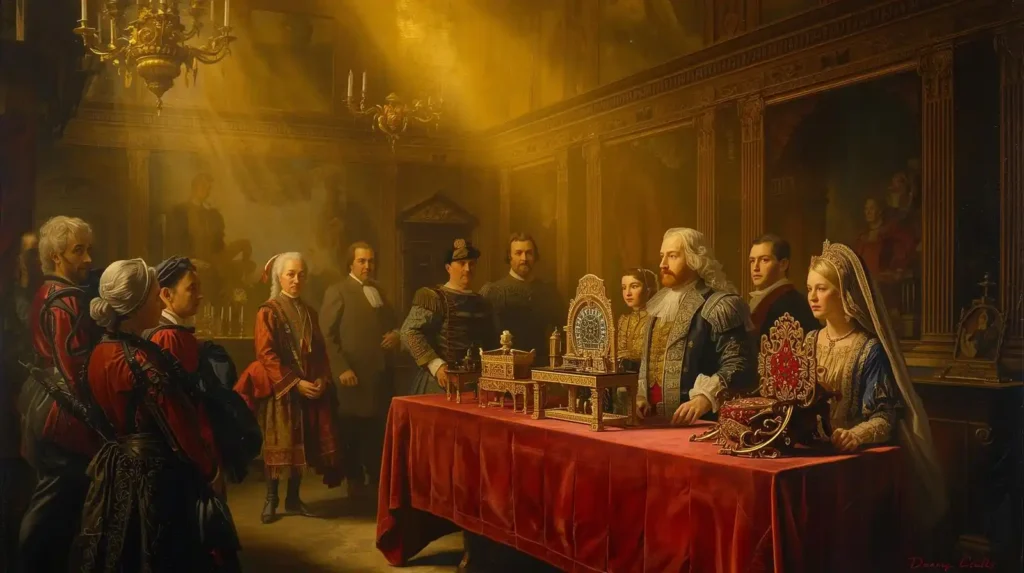
Case Studies & Notable Examples
Queen Mary’s Dolls’ House
A crown jewel in miniature history, Queen Mary’s Dolls’ House (completed circa 1924) comprises exquisitely furnished rooms, plumbing, working lights, and a library of tiny books, some commissioned from famous authors. Many of its furniture pieces, including detailed upholstery, were made by noted miniaturists like Dorothy Rogers. The level of craftsmanship makes its furnishings benchmarks for collectors of vintage and antique dollhouse furniture.
Astolat Dollhouse Castle
The spectacular Astolat Dollhouse Castle, valued at tens of millions, houses thousands of miniatures, many of which are antique dollhouse furniture pieces—some even borrowed from museum and private collections. In its interiors you will find miniature styles from multiple eras: Tudor, Gothic, Rococo, and Victorian—all harmonized into an imposing collector’s showcase.
TynieToy Furniture (1925–1935)
A small but illustrative example: TynieToy’s early miniature lines captured the colonial revival taste. Collectors now prize these pieces, especially those with early paper labels or rubber stamps (used circa 1925) before later impressed logos took over. Recognizing and dating those marks can help distinguish truly vintage from later reissues.
Summary & Collector’s Roadmap
| Phase | Collector Action | Focus & Priority |
|---|---|---|
| Historical grounding | Study cabinet house origins, Victorian trends, and 20th-century makers | Build context and visual vocabulary |
| Niche definition | Choose era, style, scale, or maker focus (e.g., Victorian, TynieToy) | Keeps collecting manageable |
| Research & reference | Acquire key reference books, catalogs, and auction archives | Essential for identification & valuation |
| Acquire & authenticate | Evaluate provenance, materials, and toolmarks | Mitigate risk of reproduction or forgery |
| Conserve & display | Use archival storage, stable climate, and display vitrines | Protect fragile vintage materials |
| Document & share | Photograph, log, catalogue, and participate in forums | Builds provenance and raises collective knowledge |
Frequently Asked Questions (FAQ)
1. What defines “vintage” versus “antique” dollhouse furniture?
While definitions vary, many collectors consider “antique” miniature furniture as items made before circa 1930, or earlier still (Victorian or Edwardian era). “Vintage” can refer to pieces made in the first half or mid part of the 20th century (e.g. 1920s–1950s). The boundary is often less important than provenance, style, and authenticity.
2. How can one distinguish a true vintage piece from a later reproduction?
Look for authentic wear consistent with age, tool and machine marks, maker’s stamps or labels, construction techniques (e.g. hand joinery), and consistency with known catalog models. Reproductions tend to display overly clean surfaces and lack patina.
3. Are there standardized scales for vintage dollhouse furniture?
Yes, 1:12 (one inch to one foot) became a de facto standard in the 19th and 20th centuries. Some early miniatures or specialized sets may use 1:16, 1:24, or other scales. A mismatch in scale can impair display harmony.
4. How should one display and store fragile miniatures?
Use climate-controlled display cabinets or glass vitrines, avoid direct sunlight, maintain moderated humidity, and store unused pieces in padded archival boxes or trays. Always handle with gloves.
5. What are typical value ranges for vintage miniature furniture?
Simple single pieces (chairs, tables) might range from tens to low hundreds of dollars, depending on rarity and condition. Complete, signed sets or historically significant pieces may command thousands to tens of thousands, especially at auction.
6. Can I integrate vintage pieces into a new dollhouse build or modern display?
Absolutely—many collectors use vintage pieces as focal accents in rooms designed around them. The key is scale compatibility, visual harmony, and protecting the older pieces from damage during installation.
7. Where can I find credible sources or communities for vintage dollhouse furniture?
Start with specialist publications (e.g. American Dollhouses and Furniture From the 20th Century), collector forums and groups in the dollhouse hobby niche, and reputable auction houses. Visiting museums or exhibits featuring historic dollhouses (such as Queen Mary’s Dolls’ House) can also provide insight and reference inspiration.



